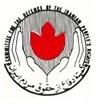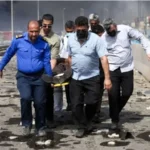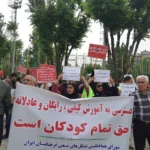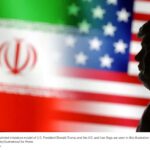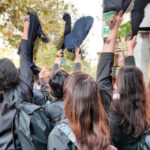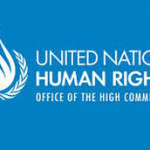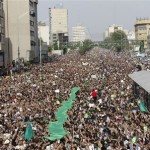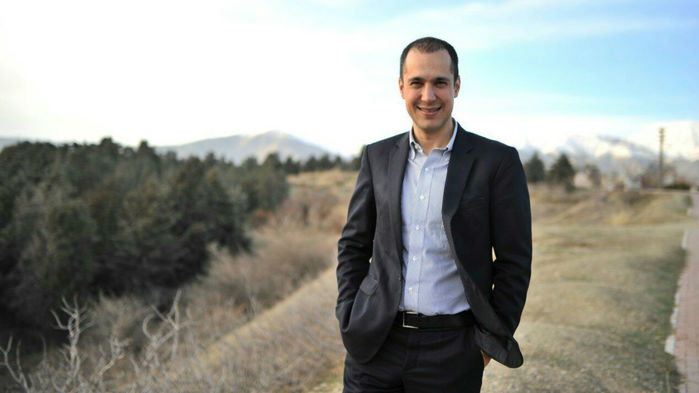
When Kaveh Madani returned to Iran last September to serve as his country’s deputy vice president for the environment, political hardliners didn’t exactly lay out a welcome mat. Upon his arrival in Tehran, the water management expert was detained and interrogated, and several years’ worth of his photos and emails were confiscated.
Eventually, things settled down and Madani, 36, a specialist on Iran’s dwindling water resources, started to raise his profile inside the country. Prior to his homecoming, he had been a faculty member at Imperial College London and spent 14 years overseas, including 3 years at the University of Central Florida in Orlando.
But domestic politics in Iran took a sinister turn this past January. That month, in the wake of nationwide protests over the sputtering economy, security officers arrested seven environmental activists. The public prosecutor accused them of spying, alleging, among other things, that camera traps for monitoring rare Asiatic cheetahs and other wildlife were intended to eavesdrop on the nation’s ballistic missile program. In February, one detainee, Kavous Seyed-Emami, co-founder of the Persian Wildlife Heritage Foundation in Tehran, died in mysterious circumstances in Tehran’s Evin Prison. Authorities claim he committed suicide.
Madani, too, came in the crosshairs. He was detained briefly in February after Seyed-Emami’s death but released after an outcry from the public, Iranian reformists, and international media. Hardliners interrogated him several times during his brief stint as a public servant, he says, and accused him of spying for MI6, Mossad, and the U.S. Central Intelligence Agency. He sought to counter that narrative through his work in the department and through social media.
But the pressure mounted. In March, photos of him dancing at an awards ceremony during the American Geophysical Union’s annual meeting in California in 2013 were released by hardliners. Opponents argued that a person who dances does not qualify as a top official of an Islamic state.
With the threats against him escalating, Madani last month resigned his post while on his way back to Tehran from a work trip to Bangkok. He has since been residing at an undisclosed location outside Iran.
He spoke with Science about his rollercoaster government tenure and his hopes for having created room for future returning expatriate scientists to maneuver in Iran when political tensions ease. This transcript was edited for clarity and brevity.
Q: Why did you return to Iran?
A: It was a once-in-a-lifetime opportunity to serve at one of the highest possible levels a scientist can serve. I thought if I succeed, there would be more trust in scientists and more trust in people of my generation. And to inspire other Iranians outside to go back and help. I went back with the hope of creating hope.
Q: As tensions inside Iran rose in January, did you have any foreboding of what might happen?
A: Remember, I was interrogated after arriving in Tehran. Before that, I never thought the hardliners would get so nervous about environmental activism, like trying to save cheetahs.
Q: Yet you felt it was a manageable level of pressure—at least in the beginning.
A: Many people thought that as a scientist from abroad, I would be lost trying to navigate the bureaucratic system. But at the Department of Environment, we were functioning really well. I was in charge of international relations, outreach and education. I’m proud of creating a culture of teamwork in my section. We managed to grab people’s attention on waste [of all kinds] through a national campaign.
Q: Is there a water crisis in Iran now?
A: We’re past the crisis stage. It’s a water bankruptcy. Our demand and consumption are way higher than the available water.
I had planned to focus on water in the summer. In the meantime, we were doing a lot. I became vice president of the [United Nations] Environmental Assembly, and we helped [the United Nations Economic and Social Commission for Asia and the Pacific] launch a new initiative on dust storms.
Q: Was there a turning point when the activists were arrested?
A: This is the thing. We have 850 registered environmental NGOs [nongovernmental organizations] in Iran. What is their impact? Nobody had that answer. There are a lot of problems the government can deny. But the government cannot deny the air pollution in Tehran, or the dust storms in Khuzestan [in southwest Iran], or the deterioration of Lake Urmia. So, you better let people speak about them. And that’s what has happened. Speaking out about the environment became a sort of safe space.
I just hope that on environmental matters, whether it is scientists or activists, people should spend more time on public awareness and sharing data. Once we’re all on the same level of understanding, it’s harder to sell conspiracy theories. The story from the hardliners about me is that [I] was trying to paint a dark picture of Iran’s water sources to justify shutting down the agricultural sector and import [genetically modified organisms]. For that reason, they called me a bioterrorist. I said, “You’re misinterpreting scientific facts.” I knew my science—and was using science as my weapon.
I blame some of my friends, prominent scientists, for staying quiet on issues related to Iran’s environment. When there’s one entity building a wrong narrative and selling it to people, it’s really hard to counter that if no one is speaking up.
Q: Was it a difficult decision to quit? What was the tipping point?
A: I was under pressure for over 6 months, as they tried to prove I was a spy. They had copies of my Facebook account, all my emails. I never claimed to be a different person. I shave, I look differently, I speak differently. But I knew I wasn’t a spy. Getting rid of me, discrediting me, was their main goal.
Q: What message were they trying to send by discrediting you?
A: Look, hardliners are the same all over the world. In the U.S., when I was at University of Central Florida, I was told by [a U.S.] export control officer there that I cannot be a co-author of a paper with Iranian co-authors [because of how U.S. regulations were then being interpreted]. Some of the questions I was getting during my interrogation in Tehran were the same as what I get at the borders of some countries in the West. Hardliners and radicals don’t like a peaceful environment because conflict is essential to their survival, no matter where they are. I think I was more of a threat because I was breaking down borders. Trying to solve things with a scientific approach, trying to be inclusive. Targeting me was a miscalculation on their part.
Q: If they make an example of you, they can make an example of anybody.
A: OK, the hardliners won their battle against me. But they lost the bigger war with the people of Iran. If anything, they made me more popular. People could tell who’s really guilty, and who cares about their country. I pushed some boundaries, and hopefully created more space for someone who follows after me. And hopefully the government will think carefully how to protect them.
In some ways, my time in Tehran was the best sabbatical one academic could wish for. This was a wonderful learning experience. On the other hand, I realize that I’m lucky I’m not in prison, or dead.
Source: Sciencemag.org

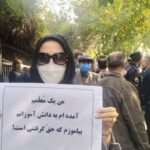
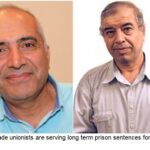
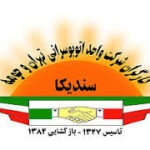

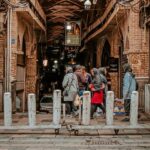
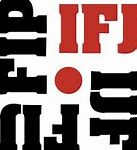



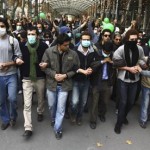
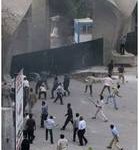
 Posted in
Posted in 